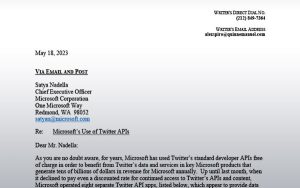— March 1, 2019
For many smaller brands, marketing gets harder each passing year — what with the marketplace in an almost constant state of disruption and oversaturation. If you own a business or find yourself in charge of a brand, chances are good that you’re trying to determine the best way to reach your target audience for the year ahead.
As with any other year, certain marketing trends are already emerging. For any brand hoping to build an audience, ignoring these trends could spell disaster. Consider for a moment your thoughts on a business that keeps mum on social channels. You’ve probably found yourself creating a narrative about the quality of its products or care for its customers.
The lack of a social presence can also make customers think of a brand as old or antiquated, which can lead them to seek products or services from a competitor. Why do business with a brand that’s not up-to-date on the latest trends? What’s more, consumers want to interact with a brand, and your absence on social channels provides no opportunity for that. They can easily find another brand that’s willing to establish a relationship, build trust, and work for consumers’ business.
The new year is well under way, and it requires your brand to not only find its authentic voice, but also leverage video content and social media to bring that voice above the rest of the noise.
1. Authenticity
Fewer and fewer consumers trust brands — and even fewer are brand-loyal — leaving brands both big and small with no other option than to “lift the veil” around their businesses. You must show the public your brand’s humanity in nearly every move you make, and this often starts with how you communicate with a target audience.
Netflix has built a brand voice rooted in authenticity. Each post, GIF, or meme from the streaming service feels as if it’s coming from a friend, and not just any friend — one with a sense of humor. Sure, there’s still marketing involved with what’s being shared, but the consistency in voice across all platforms makes customers’ interactions feel authentic.
So give consumers a glimpse into your organization. Share stories about your culture, mission, values, employees, etc. Post pictures, videos, and memes. Start thinking of your brand as a human being with a personality similar to that of your target audience. If you’re able to strike the right tone, consumers will feel the authenticity in your brand and be more inclined to trust the viewpoint, product, or service.
2. Video
Video played a critical role in Casper’s successful content marketing strategy, and brand managers have taken notice. The online “bed in a box” company got real traction from an early YouTube video made by a pair of unsatisfied customers. The bed didn’t work out for the couple, but the unboxing experience was so amazing that their excitement over the experience was enough to sell Casper to others. Now, you can find videos highlighting everything from unboxing the mattress to the mattresses’ top-notch engineering.
Video will be your best tool to forge a genuine connection with your audience. Aberdeen Group found that video marketers get 66 percent more qualified leads. The study also marked a 54 percent increase in brand awareness when video was used in marketing.
The most obvious use for video content is to advertise products or services. But this is a delicate line because viewers don’t want to watch pure promotion — who really wants to see another commercial? Instead, consider developing video content to showcase your brand as a whole. Share what’s going on inside your organization, which can bolster the authenticity of your brand.
3. Social media
There’s no better way to lift the veil and utilize video content than through social media. It can spread your message far and wide, keep a log of your brand’s messaging, and allow people to investigate the “persona” behind the brand. In fact, social media marketing is expected to grow from $ 32 billion in 2017 to an estimated $ 48 billion by 2021.
Besides product-market fit, Airbnb grew its business almost entirely by way of social media. The brand relies heavily on user-generated content, harnessing its customers’ posts of their stays on Instagram. The company also uses Twitter as part of its customer service strategy, going as far as setting up a Twitter account exclusively for customer support.
Leverage the popular platforms, and explore those new to the scene. If you’re authentic and entertaining with your messaging, it can create a viral effect that can increase the awareness of the smallest brands.
How do you plan to utilize these trends in your digital marketing efforts in 2019? Did we miss any trends you’ll have your eye on?
Digital & Social Articles on Business 2 Community
(66)







